Introduction
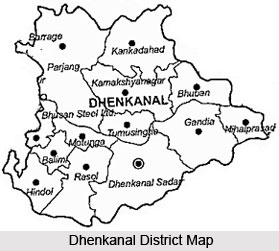 Dhenkanal District is an administrative district of Orissa. This district, situated on the Cuttack-Sambalpur road is believed to have derived its name from a Savara chief named Dhenka, who have ruled the land. The significance of Dhenkanal District lies in the profound historical evidences and interest with which Dhenkanal is endowed. This district of Orissa is popular as a famous religious site for a period of over hundred years. The antiquity of Dhenkanal District is evident from the historical details of the district. Dhenkanal District is bounded by the Keonjhar District in north, Cuttack District in south, Jajpur District in the east and Angul District in the west. This district lies between longitudes 85 degree 58 minutes to 86 degree 2 minutes east and latitude 20 degree 29 minutes to 21 degree 11 minutes north.
Dhenkanal District is an administrative district of Orissa. This district, situated on the Cuttack-Sambalpur road is believed to have derived its name from a Savara chief named Dhenka, who have ruled the land. The significance of Dhenkanal District lies in the profound historical evidences and interest with which Dhenkanal is endowed. This district of Orissa is popular as a famous religious site for a period of over hundred years. The antiquity of Dhenkanal District is evident from the historical details of the district. Dhenkanal District is bounded by the Keonjhar District in north, Cuttack District in south, Jajpur District in the east and Angul District in the west. This district lies between longitudes 85 degree 58 minutes to 86 degree 2 minutes east and latitude 20 degree 29 minutes to 21 degree 11 minutes north.
History of Dhenkanal District
As the archaeological evidences depict that the region of present Dhenkanal was inhabited since the prehistoric times when there was no organized administrative authority. However the historical facts of Dhenkanal during the prehistoric times are in dark oblivion, due to the nonexistence of any written documents. Thus, the prehistoric facts of Dhenkanal are solely dependent on the archaeological evidences and the rock inscription. The Nasik rock inscription reveals that during 2nd century A.D, the tract of Dhenkanal was under the Sattavahana dynasty, while in the 3rd and 4th centuries A.D, the Guptas were at the helm of the administration. In the 6th and 7th century A.D, Dhenkanal came in the hands of the Bhauma karas. Finally the Sulki dynasty grabbed Dhenkanal from the Bhauma Karas and continued to be the absolute authority of Dhenkanal till 9th century. As the history of Dhenkanal contemplates, the authority of Dhenkanal has been passed under various kings and chiefs belonging to various dynasties.
During the Somavansi expedition, the vast tract of Dhenkanal was occupied by them who continued to be the sovereign authority of the Dhenkanal for couple of years. But if the history of Dhenkanal is to be followed, the district of Dhenkanal made an active progress during the Gangas, who ousted the Somavansis from their former state. The Gangas, in addition of being sophisticated than the erstwhile kings were the warrior tribes. The unremitting desires of the Ganga kings to be the master of the maximum part of Orissa laid the foundation of their downfall. The incompetent successor of the Ganga rulers could not retain the status of integrated whole of the kingdom and in the later part of their rule, Dhenkanal, including the other parts of Orissa were fragmented into several sections.
Further, historical accounts of Dhenkanal specify that when the Suryavanshis ascended the throne of Dhenkanal, the entire region was disintegrated completely. Hence, the historical documents of disintegrated Dhenkanal during the reign of the Suryavanshis are likely to be non-existent. However, the most accepted view is that the authentic historical details of Dhenkanal are codified right from the time when a tribal chief mainly Dhenka, ruled Ghumuranali, Dudianali and Kantanali encompassing a significant portion of present Dhenkanal. He was a Savara and was a ferocious warrior. He named his kingdom `Dhenkanal` after his name, as the popular faith runs. But the Savara chief was not destined to be the sovereign authority of Dhenkanal for long. Finally Sridhar Bhanja of Besalia defeated and killed the chief in the battle. Moreover, the history of Dhenkanal District was concluded with the Bhanja rulers as the supreme authority of the whole of Orissa till the independence of India. Finally the princely state of Dhenkanal was merged with the Indian Union, after the country`s independence in 1947.
Dhenkanal District contains a centre of religions movement called `Mahima Dharma` since last 100 years or more and spread over through out the Indian Union. The religious movement in the medieval period also touched to this district. The famous `Kapilash Hill`, which is popularly known as the `Kailash` of Utkal, lies in this district. Lord Chandrasekhar Mahadev temple is set up at the top of the hill.
Geography of Dhenkanal District
Major portion of Dhenkanal District is covered with dense forest and a long range of hills. Hence, this district is called as the `Home of elephants and tigers for the country`. The climate of the Dhenkanal District is hot and dry, sub humid type with an average annual rainfall of 1696 mm. The average minimum and maximum temperatures are around 19 degree Celsius and 33 degree Celsius respectively. The humidity is generally high varying from 31 percent to 88 percent. The climate is hot during April and May and cold during December and January. The monsoon generally breaks during the month of June.
Economy of Dhenkanal District
Economy of Dhenkanal District is mainly agrarian in character. An agricultural district like Dhenkanal gains much from forests which plays an important role in the economy of the district. The principal forest products are Timber, Bamboo, Fire wood and Kendu leaf. The minor forest products are Lac, Honey, Kenduli Gum, Wax, Mahua flower, Sunari fark, Siali Leaves, Catechus, Tassar Cocoons and other raw materials used for medicine. Some large scale industries like Nilachal Refractories, Utkal Asbestos Ltd, Orissa Polyfibres Ltd, Shakti sugar are also established in this district.
Culture of Dhenkanal District
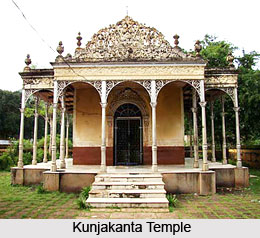 Culture of Dhenkanal District involves diverse religious and traditional beliefs of the native people. It is said that Dhenkanal District is the place where the fertile soil for all religious sects and philosophies is available. Rightly from its inception various sects like Vaishnavism, Shaivism and Shaktism flourished in the region. Besides that Buddhism beliefs to some extent also found a place of adoration in Dhenkanal District. Further, Mahima cult originated and spread from this place.
Culture of Dhenkanal District involves diverse religious and traditional beliefs of the native people. It is said that Dhenkanal District is the place where the fertile soil for all religious sects and philosophies is available. Rightly from its inception various sects like Vaishnavism, Shaivism and Shaktism flourished in the region. Besides that Buddhism beliefs to some extent also found a place of adoration in Dhenkanal District. Further, Mahima cult originated and spread from this place.
The different cultural beliefs of the people of Dhenkanal District are mentioned below -
Shaivism: Shaivism found a fertile ground in this district of Orissa. Lord Shiva is worshipped in several places throughout the district. There are some eminent temples dedicated to lord Shiva. Like for instance, Shiva temples are located at Ganeshkhola, at Aswakhola, at Jibankhola and also in the heart of Dhenkanal town.
Vaishnavism: It relates to worship of Lord Vishnu and his incarnations. Dhenkanal District has a great impact on Vaishnava sect. Sridhar swami a Vaishnava saint settled at Kapilash and wrote the annotations of Srimat Bhagavatam in Sanskrit language. The image of Nrishinga at Kapilash, the temple of Sri Narayana, the foot print of Sri Gauranga, Sri Patitapavana Jaganath image in the temple of Lord Chandrasekhar signifies the evolvement of Vaishnava cult in Dhenkanal District. It further developed by the royal patronage of the kings who ruled the region.
Harisingh Vidyadhar constructed Sidha Balarama Temple at Dhenkanal and which was subsequently completed by Nrusingha Bhamarbar. The advent of Goudiya Vaishnavism or the Bhakti cult created an epoch in the spiritual history of Dhenkanal District. Raja Kunjabehari was a Vaishnava who wrote `Premsheela` a spiritual script. Kabi Brajanath wrote Keli kalanidhi, Gopibilapa and many other Vaishnava kavyas. Rajarshi Surapratap spearheaded the spiritual field. He created Debottar Department for Dhenkanal and appointed Sri Parvati Charan Das as the magistrate. He erected Jaganath Temple in the premises of Lord Balaram Temple, constructed Jay Gopal Temple and the famous Kunjakanta Temple at Dhenkanal District.
Shaktism: Along with Shaivism and Vaishnavism, Shaktism or the worship of Shakti, Indian Goddess is evident in the district. Parvati image at Kapilas, Brahmani Devi temple, Dhakinakali temple, Ma Sundarsuni and Ma Jenadei at Dhenkanal proves that the practice worship of Shakti is still in force. Dhenkanal has a martial tradition and the rural militia namely the `Paikas` are the traditional warriors who worship Goddess Durga. Hence in different part of the district Shakti temples can be found. The Stambeswari at Kualo, Ramachandi, on Brahmini bank, Sukia Bauti temple at Hindol, etc. are famous Shaktipeeths in India.
Mahima Dharma: It is the unique contribution of Dhenkanal to the spirituality of the country. Joranda is the centre of the Mahima dharma. Mahima dharma originated in such a manner in which there were no critical rituals of the Brahmanism. It also does not believe in caste and creed. The teachings of this dharma were simple and understandable by the rural people.
All these beliefs and religions reflect the religious culture of Dhenkanal District.
Festivals of Dhenkanal District
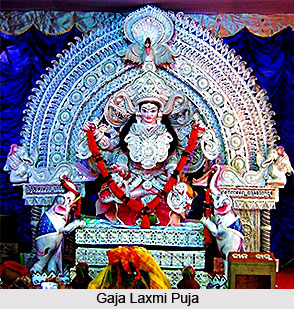 Various colourful and vibrant festivals are celebrated in Dhenkanal District. Festivals of Dhenkanal District are observed by the people with immense joy and enthusiasm. It also reflects the diverse culture and traditions of this district of Orissa. Shivaratri, Gaja Laxmi Puja, Dussehra and Bullock Festival are some of the popular festivals of Dhenkanal District.
Various colourful and vibrant festivals are celebrated in Dhenkanal District. Festivals of Dhenkanal District are observed by the people with immense joy and enthusiasm. It also reflects the diverse culture and traditions of this district of Orissa. Shivaratri, Gaja Laxmi Puja, Dussehra and Bullock Festival are some of the popular festivals of Dhenkanal District.
Gaja Laxmi Puja: Gaja Laxmi Puja in Dhenkanal enjoys a special place in the cultural map of Orissa. This festival continues for eleven days. This is actually the longest festival of this district. Celebration of Gaja Laxmi Puja started in the year 1923 at Kunjasahu Chowk now known as Ganesh Bazar. During the festival, entire Dhenkanal town is decorated with puja mandaps and electrical lighting. The `Polishree mela` organized by the district administration and other cultural programmes add glamour and charm to the celebration of this festival.
Maha Shivaratri at Kapilash: Kapilash is the abode of Lord Chandrasekhar which is one of the famous tourist spots of Orissa. Every year during Maha Shivaratri `Jagar Yatra` is being observed. Devotees and Pilgrims come from different corners of the country and assemble on the Kapilash peak. Prayers are offered to Lord Chandrasekhar with great devotion and austerity. The district administration makes minute arrangements for the convenience, security and comfort of the devotees.
Dussehra at Kamakhyanagar: Dussehra festival of Kamakhyanagar bears a special significance in the culture of Dhenkanal District. The festival is celebrated in the Kamakhyanagar Town with high spirits. Goddess Durga is worshipped. Kamakhyanagar town is decorated with lights and decorative items. The festival is celebrated for four continuous days. Immersion of Idols takes place on the day after `Vijaya Dashami`. On this day, statue of Ravana is set on fire.
Magha Mela at Joranda: Magha Mela at Joranda is the most famous festival of `Mahima Dharma`. Every year it begins on `Magha Purnima` and continues for four days at Joranda.
Bullock Festival of Bhuban: Bullock festival of Bhuban has a special identity. In the past, the salt merchants used bullocks to carry their loads. They used to travel different business points of India with this animal of burden. In order to commemorate the old heritage and to realize the importance of bullock in rural economy and agrarian society, the bullock festival of Bhuban is observed in Dhenkanal District. During Dussehra, bullocks are decorated with ornaments, beads and bells. Racing competition is also held during the Bullock festival.
These are some of the major festivals of Dhenkanal District appositely reflecting its rich and diverse culture.
Tourism in Dhenkanal District
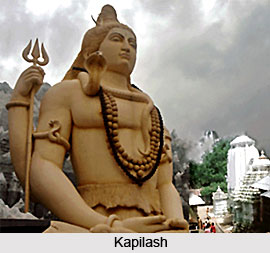 Tourism in Dhenkanal District includes several magnificent and amazing sightseeing options. There are various places in this district of Orissa that are full of attractive tourist options. They are meant for giving a memorable and enriching experience to the travellers. The splendid tourism options attract people from different parts of the world. This district offers both religious as well as nature tourism options to the visitors. Like for instance, Dhenkanal town, the headquarters of Dhenkanal District, is clustered with the pinnacles of several temples dedicated to different deities. Notable among them are the temples of Balabhadra, Sambhugopal, Raghunath and Kunajakanta Krishna. Moreover, the unique collection of the District Museum here comprises traditional weapons of the ex-rulers of Dhenkanal and tools of the pre-historic period.
Tourism in Dhenkanal District includes several magnificent and amazing sightseeing options. There are various places in this district of Orissa that are full of attractive tourist options. They are meant for giving a memorable and enriching experience to the travellers. The splendid tourism options attract people from different parts of the world. This district offers both religious as well as nature tourism options to the visitors. Like for instance, Dhenkanal town, the headquarters of Dhenkanal District, is clustered with the pinnacles of several temples dedicated to different deities. Notable among them are the temples of Balabhadra, Sambhugopal, Raghunath and Kunajakanta Krishna. Moreover, the unique collection of the District Museum here comprises traditional weapons of the ex-rulers of Dhenkanal and tools of the pre-historic period.
The other places of interest of Dhenkanal District are as follows -
Kapilash: The loftiest peak of Kapilash range enshrines the temple of Lord Shiva at height of about 457 meters. The place is identified with `Kailash`, the legendary abode of Lord Shiva. Thousands of devout souls throng to Kapilash on the occasion of `Mahasivaratri`, the night consecrated to Lord Shiva in the month of February-March. To the east of the main temple at a higher altitude stands the temple of Narayan and Viswanath. The hill has several caves as well as the ruins of a mediaeval fort which are regularly visited by pilgrims. Some of the caves are associated with the Puranic texts that have great appeal to the visitors. Some great names like Shridhar Swami, commentator of the Bhagavat and Mahima Gosain, the founder of Mahima Cult, are historically associated with the place. Besides, the Deer Park and Science Park are two other added attractions of the place.
Joranda: Famous as the religious headquarters of `Mahima Dharma`, Joranda houses the samadhi of Mahima Gosain, the preacher and founder of the Mahima Cult, The other sacred temples are the `Sunya Mandira`, `Dhuni Mandira` and `Gadi Mandira`. Pilgrims in large numbers visit the Joranda fair held on full-moon day of Magha which falls in January-February every year.
Saptasajya: A place of scenic beauty, Saptasajya is situated at a distance of about 11 km to the south of Dhenkanal town. According to some legend, `Pandavas of Mahabharat` spent some days of their undercover life (Agnuata vasa) in these hills. A small spring flowing near this place enhances its charm and beauty. It is an ideal place for picnic and relaxation.
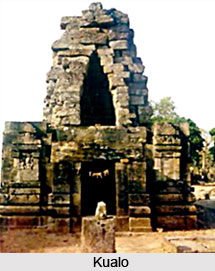 Kualo: Kualo is famous for housing a plethora of temples dedicated to Lord Kanakeswar, Baidyanath, Paschimeswar, Balunkeswar and Kapileswar. In its ruined form, the temple of Kanakeswar preserves some of the earliest specimens of sculptures representing temple building activities in Orissa. Kualo is around 72 km from Dhenkanal.
Kualo: Kualo is famous for housing a plethora of temples dedicated to Lord Kanakeswar, Baidyanath, Paschimeswar, Balunkeswar and Kapileswar. In its ruined form, the temple of Kanakeswar preserves some of the earliest specimens of sculptures representing temple building activities in Orissa. Kualo is around 72 km from Dhenkanal.
Ladagada: Ladagada is a place of religious importance. A piece of stone known as Lord Siddheswar is worshipped here with great reverence. There is an ancient banyan tree which is known as Kalpabruksha. This pilgrimage centre of Dhenkanal District is located at 40 km from Dhenkanal town.
Dandadhar: Dandadhar is the site of an irrigation project on Ramial River. It is considered as an ideal place for outing. It offers amazing sightseeing options. Dandadhar is located at around 67 km from Dhenkanal.
With these attractive places of interest, tourism in Dhenkanal District also offers great scopes of excursion.
Pilgrimage Tourism in Dhenkanal District
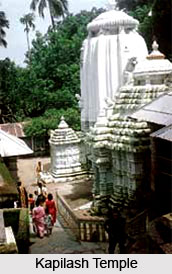 Pilgrimage tourism in Dhenkanal District basically consists of several ancient temples. These temples are worth visiting and a large number of people visit them every year. Due to rich cultural heritage and spiritual height Dhenkanal is dotted with innumerable temples, maths (abbeys) dating back to ancient times. All sects of Brahmanism like Saivism, Vaishnavism, Shaktism and other minor sects have plenty of their holy places.
Pilgrimage tourism in Dhenkanal District basically consists of several ancient temples. These temples are worth visiting and a large number of people visit them every year. Due to rich cultural heritage and spiritual height Dhenkanal is dotted with innumerable temples, maths (abbeys) dating back to ancient times. All sects of Brahmanism like Saivism, Vaishnavism, Shaktism and other minor sects have plenty of their holy places.
Shiva Temples in Dhenkanal District:
Kapilash Temple: It is situated in the north east corner of Dhenkanal town at a distance of 26 km from the district head quarters. The temple is situated in about 2239 feet from the sea level and it is 60 feet in height. Narasinghdeva-I constructed the temple for Sri Chandrasekhar in 1246 AD. In the left side of the temple, `Payamruta kunda` and in the right side `Marichi kunda` exists. Lord Biswanath Temple is also situated in Kapilash. According to some scholars this temple is older than the Chandrasekahr Jew Temple, hence it is also known as `Budha linga`. There are many legends about Kapilash pitha and its significance. History says it was the ashram of Kapila muni, to some scholars it is considered as the second Kailash of Lord Shiva. Sridhar Swami who wrote commentary on Srimad Bhagavatham stayed there. There are some monasteries also in the premises.
Naganatheshwara Temple: This temple belongs to Sri Naganatheshwara Shiva, situated at village `Nagena` about 20 km from Dhenkanal. It is an ancient temple and was constructed during the reign of the Keshari Dynasty. Near this temple, there are remains of a fort which is still unidentified. Brahmani River flows through this region.
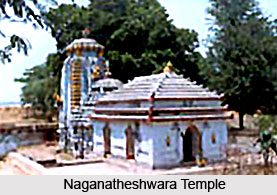 Astasambhu Temple: Kualo or Karmula was the ancient capital of Dhenkanal. Kualo is situated in north of Dhenkanal town at a distance of around 32 km on the right side of Brahmani River. The kingdom was ruled by the Shulki kings who hold `stamba` epithets. They were the feudatories of the Bahmukar kings. They worshiped Lord Shiva. There are eight Shiva temples at Kualo known as `Ashta Sambhu`. These eight Shiva lingas are known as - Kanakeswar, swapneswar, Aisneswar, Kapileswar, Baidyanatheswar, Bane and Lokanatheswar.
Astasambhu Temple: Kualo or Karmula was the ancient capital of Dhenkanal. Kualo is situated in north of Dhenkanal town at a distance of around 32 km on the right side of Brahmani River. The kingdom was ruled by the Shulki kings who hold `stamba` epithets. They were the feudatories of the Bahmukar kings. They worshiped Lord Shiva. There are eight Shiva temples at Kualo known as `Ashta Sambhu`. These eight Shiva lingas are known as - Kanakeswar, swapneswar, Aisneswar, Kapileswar, Baidyanatheswar, Bane and Lokanatheswar.
Sri Kanakeswar: It is one of the Ashta Shambhu Siva and situated near Ramachandi temple.
Sri Annakoteswar: Situated at Latadeipur. The significance of this Shiva linga is that it grooms in the bright fortnight and reduces on the dark half.
The other Shiva temples besides the above temples are as follows -
Sri Paschimeswar: Situated near Bhapur, this temple was constructed in the 7th AD by the Shambhu Vamsi kings.
Sri Daudeswar: This temple is situated on the banks Brahmani River.
Kapileswar Temple: This temple is situated in village Hatuari (near Badasuanlo).
Sri Budheswar: This temple is situated near Bhuban on the bank of river Brahmani .It is related to the mythology that Lord Kartikeya after taking holy bath in the river had the darshan of Lord Shiva.
Sri Bishwanatheswar: This temple is situated in the village mandu khura.
Sri Kamaleswar: This temple is situated near Kamalanga on the bank of river Brahmani.
Vaishnava Temples in Dhenkanal District: Vaishnavism in different form had its impact in Dhenkanal in different ages. The Ramanandi Vaisnavas, the Gaudiya Vaisnavas, the Pancharattra all developed side by side in the district.
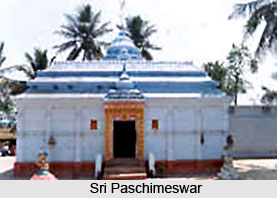 Some of the famous Vaishnava temples of Dhenkanal District are mentioned below -
Some of the famous Vaishnava temples of Dhenkanal District are mentioned below -
Siddaha Balaram Temple: Siddha Balaram temple at Dhenkanal town is the pivotal figure of the Vaishnava cult in the district. History says that Anangabhima III brought Sri Balaram from Talmul to Bhima Nagari Garh in 12th -13th Centuries AD. While he was taking the image to Puri, Sri Balaram ordered him to give up the effort. Hence, he built Dasakamba Mandala at Chittala pur near Hindol. Hari singh Vidhyadhara defeated the Bhanja King and brought the image of Balaram to Dhenkanal. He started construction of the temple in 1590 AD. The main temple is 90 feet high. The construction of gateway of the temple, the boundary wall was completed in between 1708 to 1741 AD. The Balaram temple follows the rituals like Sri Mandir of Puri and observes several auspicious days through out the year.
Thus, these temples offer peaceful pilgrimage tourism to the travellers in Dhenkanal District.



















